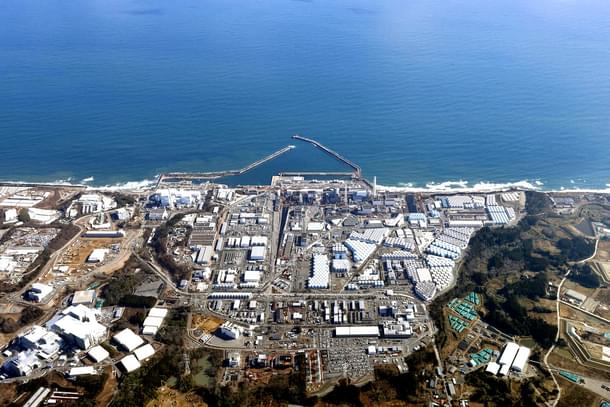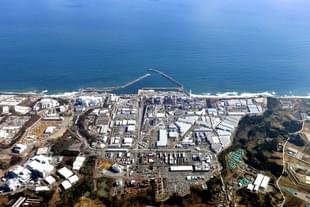News Brief
Navigating Nuclear Waters: China-Japan Seek Solutions To Fukushima Radioactive Discharge Concerns
V Bhagya Subhashini
Apr 03, 2024, 12:02 PM | Updated 12:01 PM IST
Save & read from anywhere!
Bookmark stories for easy access on any device or the Swarajya app.


Japan recently announced that its experts engaged in discussions with Chinese counterparts to address Beijing's apprehensions regarding the discharge of treated radioactive wastewater from the Fukushima Daiichi nuclear power plant into the sea.
This move comes amid opposition from fishing groups and neighbouring countries, particularly China, which imposed a ban on all imports of Japanese seafood, significantly impacting Japanese scallop growers and exporters.
According to the Japanese government, releasing the water is an essential step in the lengthy and costly process of decommissioning the plant, which is located on the country's east coast, roughly 220 kilometres (137 miles) north-east of Tokyo.
The UN's nuclear watchdog approved it in July 2023, with authorities deciding that the impact on people and the environment would be insignificant.
Why Release? Space Constraints and Storage Challenges
The stage for this decision was set years ago when authorities warned in 2019 that storage space for the accumulating wastewater was dwindling rapidly, leaving Japan with "no other options" but to resort to release.
In the aftermath of the devastating 2011 earthquake and tsunami, the Fukushima nuclear plant faced critical damage to its power supply and cooling systems.
The resulting overheating of reactor cores contaminated the plant's water with highly radioactive material. Since then, a constant influx of new water has been necessary to cool the fuel debris, leading to the gradual accumulation of radioactive wastewater.
Since the 2011 tsunami devastated the facility, 1.34 million tonnes of water — enough to fill 500 Olympic-sized pools — have accumulated.
Rainwater and groundwater infiltration further contributed to this growing issue, necessitating the need for storage and treatment solutions.
To address the storage challenge, Tokyo Electric Power Co. (TEPCO) erected massive tanks to contain the radioactive wastewater. However, the space within these tanks is fast running out. TEPCO argued that constructing more tanks wasn't a feasible option, as they needed to clear space for the safe decommissioning of the Fukushima plant.

Dialogue Between Japan and China
During the talks held in the northeastern Chinese city of Dalian, Japanese officials provided a "science-based" explanation of the safe implementation of the discharges as planned, according to statements from the Japanese Foreign Ministry.
The discussions aimed to assuage concerns and foster understanding regarding the handling of radioactive wastewater from the Fukushima plant, which suffered meltdowns of three reactors following the 2011 earthquake and tsunami.
International Verification and Collaboration
The discussions follow a visit to the Fukushima plant by Rafael Mariano Rafael, the chief of the International Atomic Energy Agency (IAEA). Rafael confirmed that the ongoing discharges have been executed safely as planned, providing an international verification of Japan's approach to managing radioactive wastewater, reports Deccan Herald.
The dialogue between Japan and China reflects ongoing efforts to uphold transparency, address concerns, and collaborate on mitigating potential risks associated with the Fukushima Daiichi nuclear disaster fallout.
As both countries navigate complex environmental and diplomatic challenges, constructive dialogue and collaboration remain essential in promoting transparency and ensuring the safety of affected regions and communities.
V Bhagya Subhashini is a staff writer at Swarajya. She tracks infrastructure developments.





